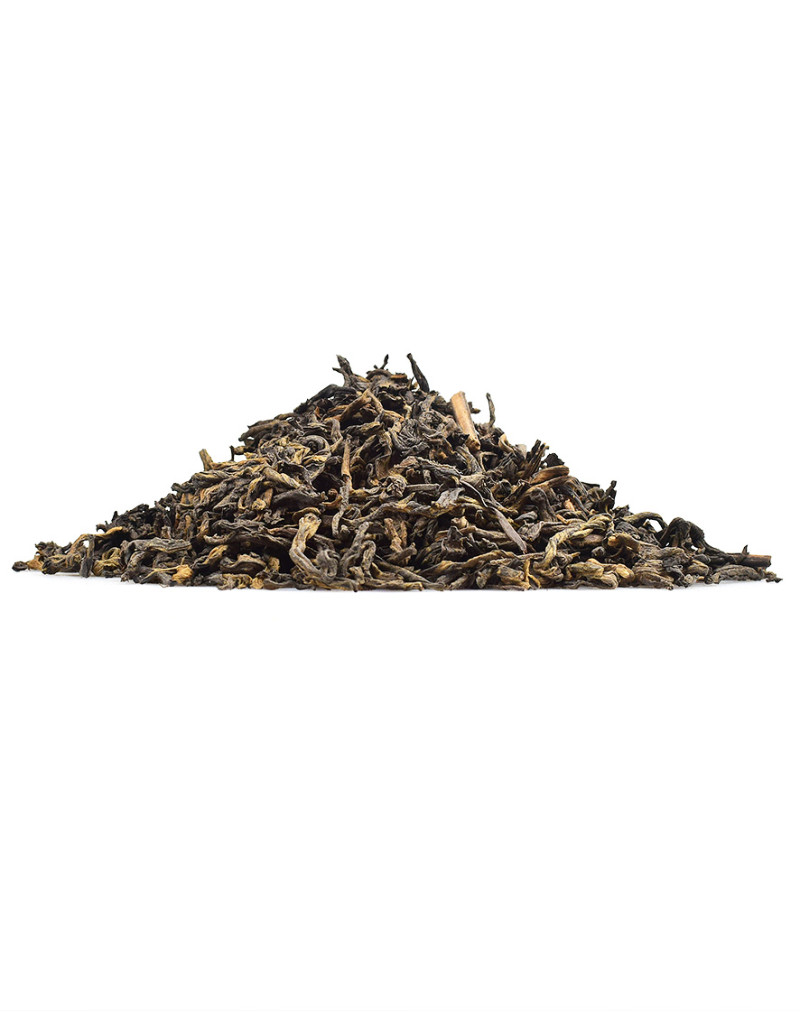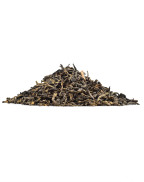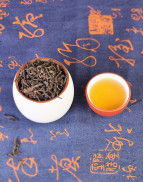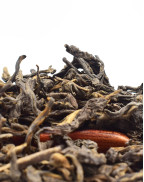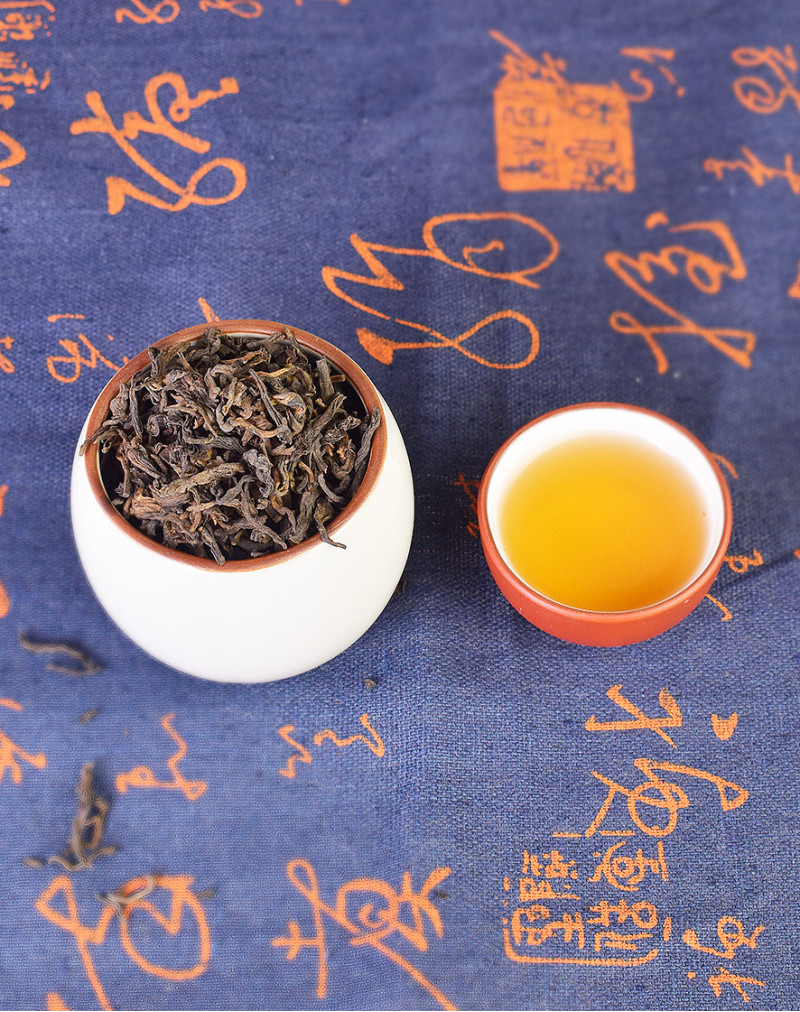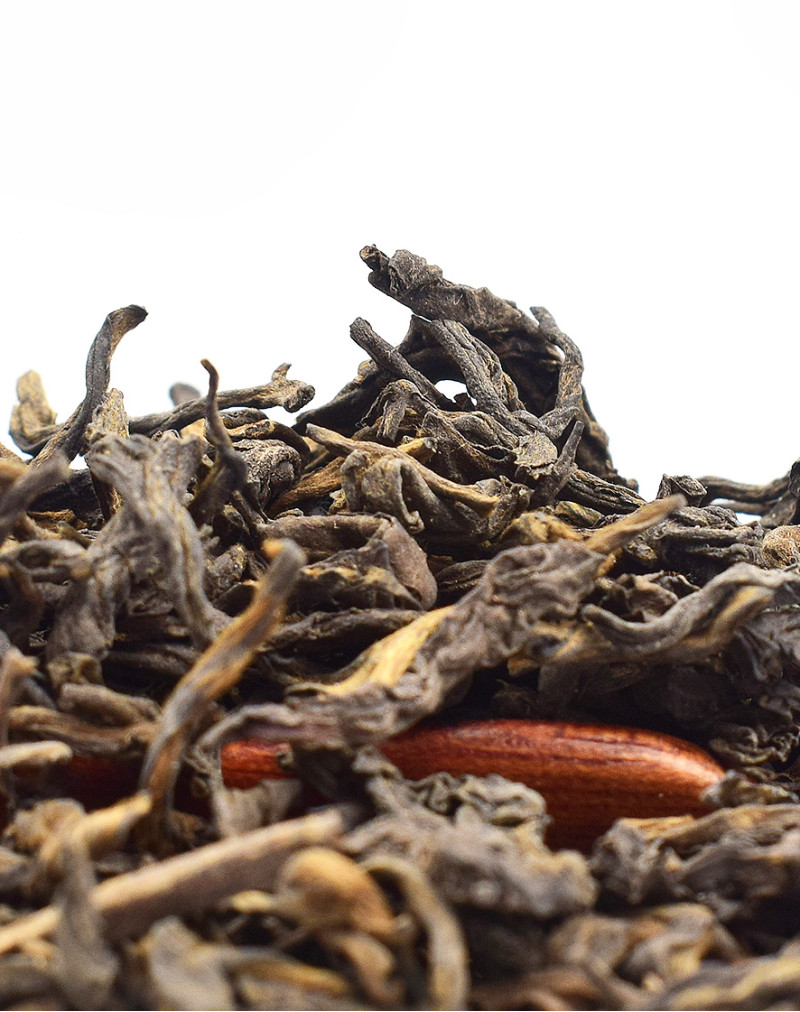Guangxi Liu Pao (Liu Bao) Aged Dark Tea
- Product Code: simple
- Availability: In Stock
Basic Info
Name: Guangxi Liu Pao (Liu Bao) Aged Dark Tea
Category: Dark
Origin: Wuzhou City, Guangxi
Tree Species: Guangxi big-leaf species
Taste & Aroma: Woody, mossy,aged flavour,smooth,thick,mellow,fragrant sweetness,bark,areca nut-like
Liquor: Orange and reddish
Dry Leaf: Dark,tightly rolled strips,glossy and oily,fairly even size
Harvest Period: Spring 2020
Altitude: 1000M above sea
Fermentation: Post–fermented / Partially fermented
Season: Spring tea
Item Form: Loose leaves
Ingredients: Hand-picked natural tea buds and leaves with some stems
Shelf Life: 10-20 years and even longer (if stored correctly)
Storage: Stored in cool, dry, dorless, lightless and airy containers such as pottery pots, pottery jars, cardboard boxes.
Flavor: Unflavored
Guangxi Liu Pao (Liu Bao) Aged Dark Tea
Introduction
Liu Bao tea is a fermented, Hei Cha (黑茶) that originates from the Liu Bao Town,Cangwu,Wuzhou,Guangxi,China.
This kind of long-term preserved tea is named after its place of origin. The history of Liu Bao tea can be traced back to more than 1,500 years ago, and it was listed as a national famous tea during the Jiaqing period of the Qing Dynasty (1796-1820).
When brewed, it produces a deep red amber liquor with a woody aroma and a distinctive mellow, rich areca nut-like flavor.Anyone who has drunk Liu Bao tea will love its "Chinese red" tea liquid.On March 16th, 2011, Liu Bao tea was selected into the protection catalogue of geographical indication products in China for its excellent quality.

Tea Garden In Liubao Town
Show Full Description
Variety of tea tree
The fresh leaves for making Liu Bao tea come from the population species in Cangwu county, the big or medium leaf species in Guangxi and their offspring strains.
Name
Like his cousin Pu-erh tea, Liu Bao tea is classified as Hei Cha (黑茶) / Dark tea in China.Dark tea is also known as post-fermented tea. The word "红茶"literally ‘red tea’, is a word used to describe what is known as ‘black tea’ in the West. The word "黑茶" literally means "black tea" in English. However, due to the cultural differences between China and the West, the word "black tea" has been used to represent another tea kind, so we can only use another english word "drak" with similar meaning to represent "黑茶".
Liu Bao tea means "six castle tea" in English.It doesn't really have much to do with castles, but historical evidence suggests it has a military connection. In the Ming Dynasty (1368 -1644), adopted an official division system to divide administrative regions. However, in practice, the "Bao Jia" system, which was set up to meet the needs in the military field, gradually replaced the official division system.

Liu Bao Tea Aged In The Warehouse
According to the official standards, the method of naming places names will be arbitrary, generally based on mountains, nationalities, rivers, names and so on. However, if a place was given a place name according to military standards at that time, the names of some villages and places would be more regular. In the garrison system in Cangwu County in the Ming Dynasty (1368 -1644), 220 officers and soldiers were divided into five garrisons, that is, 44 officers and soldiers were divided into one garrison, equivalent to five teams. Each team's garrison was set as "Bao(堡)". The first team was stationed in the first Bao(堡), the second team was stationed in the second Bao(堡), and so on. Gradually, these military stations "Bao(堡)" became the current names of some towns. The name of Liu Bao Tea comes from the Sixth Bao(堡)town,now known as Liu Bao Town.

Handmade Liubao Tea Competition
Place of origin
In addition to Liu Bao Town, Shizhai Town and Wubao Town in Cangwu County, as well as more than 20 counties in neighboring areas, such as Cenxi County and Hengxian County, together constitute Liu Bao tea planting areas. In addition, Liu Bao tea is also cultivated in neighboring provinces such as Luoding and Zhaoqing, Guangdong Province. Within the scope of Liu Bao tea producing area, there are Gongcun Liu Bao tea, Heishi Liu Bao tea, Luodi Liu Bao tea, Liyong Liu Baotea, and Cancun Liu Bao tea. The most famous ones in history are Gongzhou Liu Bao tea and Heishi tea. The quality and processing of tea produced by Lingxi in Hengxian County are similar to Liu Bao tea, also classified as Liu Bao tea.
Liu Bao town, Cangwu county, the main producing area, is located on the north side of the Tropic of Cancer. The average annual temperature in Liu Bao Town is 21.2℃, the annual rainfall is 1500 mm. There are towering peaks here, ranging from 1000 to 1500 meters above sea level.Liupao Village with good natural environment is an ideal place to grow good tea.The tea trees used to produce Liu Bao tea are mostly planted on hillsides or canyons, and the distance from the village can reach 10 kilometers.
Liu Bao tea originated in the Tang Dynasty (618-907) and Song Dynasty (960-1279), and was popular in the Ming Dynasty (1368-1644) and Qing Dynasty. During the Jiaqing period of the Qing Dynasty (1796-1820), it was selected among the 24 famous teas in China with its unique flavor of betel nut.
The production of Liu Bao Tea includes the following contents
Playing -> Withering -> Kill - green (fixation)-> Rolling-> Drying->Piling-> Pressing-> Aging.
PluckingPicking the tender leaves of Liu Bao tea is usually done during the daytime. The standards for picking are one bud and three or four leaves.
WitheringPut the picked fresh leaves in a ventilated place to let them volatilize green grass and release some water moderately. In this process, some polyphenols and other substances have also been moderately transformed.
Kill greenThe purpose of this step is to destroy the activity of enzymes in fresh tea leaves, stop the enzymatic oxidation of polyphenols, volatilize water and increase the aroma of tea.

Workers And Liu Bao Tea In The Warehouse
RollingTea workers knead the rolled tea into strips, causing the tea cells to break, and allowing the tea juice to overflow and adhere to the formed leaf surface. This step can further promote the formation of color, fragrance and taste of tea.
Wodui/pilingWudui, this is a special process in the manufacture of dark tea, "渥wo" refers to the tea sprinkled with water. "堆piling" refers to stacking tea leaves. After piling, carbohydrates, hydration pectin and water extracts are increased, and tea polyphenols are degraded. These changes make tea soup sweet, smooth, mellow and full of flavor.
PressingAfter the last step, the tea leaves will be pressed into the required shapes, such as cake, brick and mini cake.
AgingThe final critical step is aging. The process should last for at least 180 days.
Liu Bao tea should be stored for a long time, and the older the tea, the better the flavor, because the tea stored for a long time has "golden flower", that is, it contains a variety of enzymes (named Aspergillus corona), which can secrete a variety of enzymes which can accelerate the conversion of various substances contained in tea, creating a special flavor.

Golden Flowers Growing On The Surface Of Liupao Tea
The old Liu Bao tea, which has been stored for about 30 to 50 years, has a dark brown and oily color, with the fragrance of betel nut and pine smoke. After brewing, they can produce an orange and reddish transparent soup, which has a layered mineral body with a sweet, brisk,mellow finish which is craved by many people.
Healthy beverage
According to the theory of traditional Chinese medicine, Liu Bao tea is beneficial to health. Liu Bao tea has the effect of clearing away heat, relaxing muscles and reducing fat according to the different fermentation degrees. It also helps with digestion and reduces the occurrence of constipation. In addition, drinking Liu Bao tea in cold weather also can warm the body.
| Chinese Gongfu Method | |
| Tea | 3-5g |
| Water | Gaiwan 3oz / 90ml |
| Time | 7 steeps: rinse(10s),10s,10s,10s,15s,20s,30s,40s |
| Temperature | 100°c |
| Teapot Method | |
| Tea | 5g |
| Water | Teapot (8oz / 240ml) |
| Time | 1- 4mins |
| Temperature | 100°c |


